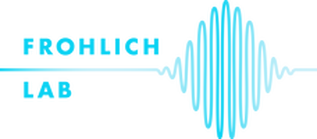|
McNickle, Emmet, & Richard G. Carson. 2015. Paired associative transcranial alternating current stimulation increases the excitability of corticospinal projections in humans. J Physiol. 593.7: 1649-66.
Summary: These authors induced spike-timing dependent plasticity (STDP)-like effects with a modified paired associative stimulation (PAS) protocol that uses tACS instead of TMS. A wide range of frequencies (80, 140, & 250 Hz) and stimulation amplitudes (1, 2, & 3, mA) were found to induce increases in corticospinal excitability measured with TMS-induced MEPs over a 30 minute period. TACS presented at 80 and 140 Hz generated the greatest increases (140 Hz evaluated as low as 1 mA). The paired effect is most robust when the peripheral afferent stimulation is long in duration (~1 sec) and this effect was observed even when applying vibrational (non-electric) stimulation to the peripheral nerve. This novel paradigm introduced new avenues for plasticity induction in the motor system that do not rely on precise timing of classic STDP protocols or more expensive equipment. Pros:
Open Questions;
Contributed by: Christopher Walker, PhD
0 Comments
Nakazono, Hisato, Katsuya Ogata, Tsuyoshi Kuroda, & Shozo Tobimatsu. 2016. Phase and frequency-dependent effects of transcranial alternating current stimulation on motor cortical excitability. PLoS ONE. 11(9): e0162521.
Summary: Nakazona and colleagues (2016) sought to evaluate the phase dependency of oscillatory brain stimulation effects in the human brain. In a series of experiments, the researchers measured TMS-evoked MEPs at multiple phases of 10 and 20 Hz TACS, then used the preferred phase identified to test the same effects at multiple frequencies (5, 10, 20, & 40 Hz). At 90 degrees tACS phase, 10 Hz and 20 Hz tACS demonstrated differentiated effects on MEP amplitudes whereby 10 Hz tACS attenuated MEPs and 20 Hz tACS facilitated MEPs. In a follow-up experiment, TMS delivered at the 90 degree phase of ongoing 5, 10, 20, and 40 Hz tACS demonstrated the frequency specificity of these effects by replicating the 10/20 Hz effects while showing no modulation by 5 or 40 Hz stimulation. The facilitation by 20 Hz was found to remain significant even compared to sham, but not the 10 Hz attenuation. Pros:
Open Questions:
Contributed by: Christopher Walker, PhD Lafleur, Louis-Philippe, Gabrielle Klees-Themens, Christine Chouinard-Leclaire, Félix Larochelle-Brunet, Sara Tremblay, Jean-Francois Lepage, & Hugo Théoret. 2020. Neurophysiological aftereffects of 10 Hz and 20 Hz transcranial alternating current stimulation over bilateral sensorimotor cortex. Brain Research. 1727: 146542.
Summary: Lafleur and colleagues (2020) applied 10 and 20 Hz tACS (1 mA) bilaterally to the motor cortex to determine how interhemispheric interactions were influenced by stimulation. By using a bilateral montage (C3-C4), the fields generated at either site were equal in magnitude but antiphase to each other. Using TMS over the left motor cortex, TACS at 10 Hz reduced the amplitude of single pulse MEPs when compared to sham and 20 Hz stimulation. Interhemispheric inhibition (IHI) of the left to right motor cortices was unchanged as were MEP amplitudes during physiological mirror movements (I.e., pinching in the contralateral hand) measured from the right hemisphere. Pro:
Open Questions:
Contributed by: Christopher Walker, PhD tACS motor system effects can be caused by transcutaneous stimulation of peripheral nerves.10/15/2021 Asamoah, B., Khatoun, A. & Mc Laughlin, M. tACS motor system effects can be caused by transcutaneous stimulation of peripheral nerves. Nature communications 10, 266, doi:10.1038/s41467-018-08183-w (2019).
Summary: Asamoah et al. proposed tACS effects are caused by transcutaneous stimulation of peripheral nerves in the skin and not transcranial stimulation of cortical neurons. They conducted 4 experiments: Single neuron activity recording in the rat motor cortex. They found both transcranial and transcutaneous can entrain neuronal oscillations (~1Hz). (spike-stimPLV). Anesthetizing the scalp significantly decreases the effect of tACS on tremor in humans. When the cortex was not being directly stimulated (upper arm), tACS still causes significant tremor entrainment. Rhythmic stimulation of peripheral nerves in healthy volunteers entrains EEG beta activity. Pro:
Open question:
Contributed by: Wei Huang Transcranial alternating current stimulation entrains single-neuron activity in the primate brain.10/15/2021 Krause, M. R., Vieira, P. G., Csorba, B. A., Pilly, P. K. & Pack, C. C. Transcranial alternating current stimulation entrains single-neuron activity in the primate brain. Proceedings of the National Academy of Sciences 116, 5747-5755, doi:10.1073/pnas.1815958116 (2019).
Summary:
Pros:
Contributed by: Wei Huang |
AuthorsEvery week, there are new and exciting scientific papers published on studies that investigated tACS. Reading and understanding these papers unfortunately requires both access to (sometimes quite expensive) scientific journals and in-depth "insider knowledge." Our goal is to share with you brief summaries of tACS studies that give you a big-picture idea of what the publications are about. There are too many studies to feature all of them but we will continuously update this page. If you have a specific study you would like to get featured, please contact us. The contributors are personnel from the Frohlich Lab and the Carolina Center for Neurostimulation. ArchivesCategories |
Proudly powered by Weebly

 RSS Feed
RSS Feed